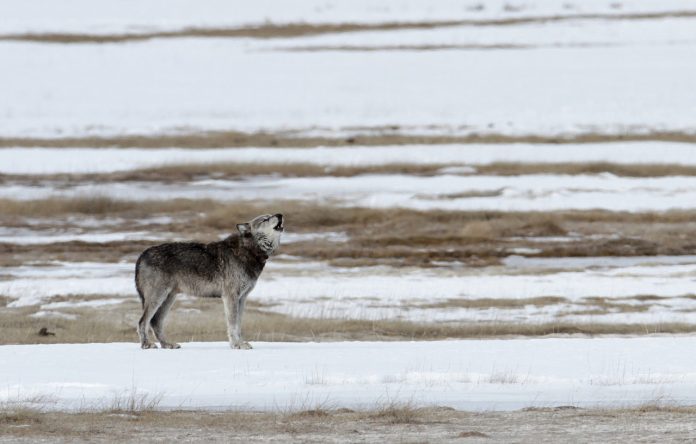YELLOWSTONE WOLF POPULATION – A new theory put forth by professor Blaire Van Valkenburgh indicates there may be a decline in the health of wolves in Yellowstone. Surprisingly, this may be due to dwindling elk numbers. Ms. Van Valkenburgh is a professor of ecology and evolutionary biology at UCLA and has been studying cracked and broken wolf teeth to formulate this theory.
Van Valkenburg’s theory is simple: due to the elk to wolf population being 100:1, wolves now have less nutrition in their diets to survive. She also evaluated the skulls of other predators from the Pleistocene period (11,700 years ago). These included dire wolves and saber-toothed cats pulled from the La Brea Tar Pits in Los Angeles, CA. These prehistoric animals also suffered from tooth fractures around the time their prey (mammoths, giant sloths, etc.) started to die out. After almost 25 years since wolf reintroduction, elk numbers are down in relation to wolves from 600:1. With less elk to eat, the wolves are having to supplement their diets by eating the bones from elk carcasses.
One wolf biologist in Yellowstone, Doug Smith, says wolves won’t chew on bones much unless they are hungry. To determine if Van Valkenburg’s theory is true, Smith says researchers will need to evaluate wolf kill sites. This will allow them to examine the bones present to see if wolves are taking them to eat later.
Other factors can lead to a wolf missing or breaking teeth. One big cause of broken teeth is being kicked in the face by prey. Being kicked in the face by an elk can cause misaligned teeth or death. To help establish her theory about tooth fractures, Van Valkenburg also looked at wolves from Alaska, Texas, New Mexico, Idaho, Canada, Scandinavia, and Lake Superior. Van Valkenburg noticed wolves who had difficult prey to hunt had greater fractured teeth than those who have easier prey (i.e. Moose). Animals with bad teeth are like humans with bad teeth, they tend to eat less to avoid the pain.
We aren’t saying the wolf population in Yellowstone is going away anytime soon. But the numbers may be plateauing relatively soon if this theory is true. There may not be an adequate amount of elk to support continued growth in wolf numbers. This could allow nature to take its course.
If you want more information on wolves, check out our other articles!















